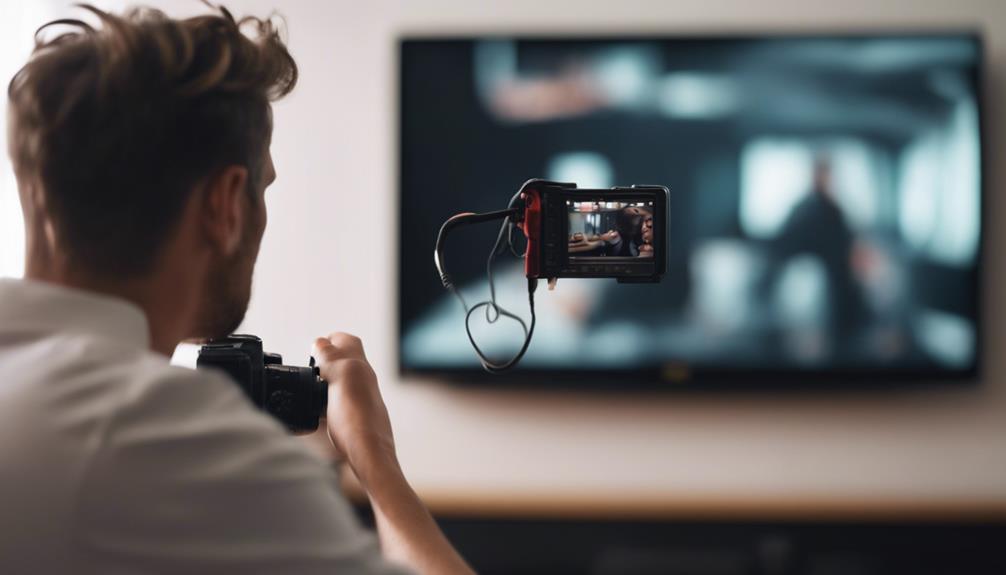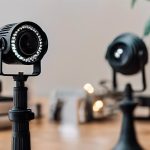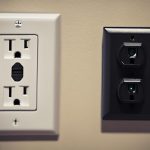To connect a spy camera to your TV, begin by checking compatibility with its technology. Gather HDMI, RCA, or USB cables and suitable adapters. Identify HDMI and RCA ports on your TV for connection. After powering on the spy camera, connect it to the TV using the right cable. Adjust the input source on your TV settings. For more detailed steps on configuring camera settings and troubleshooting tips, refer to the outlined instructions. Get ready to seamlessly integrate your spy camera with your TV for convenient monitoring and surveillance.
Check Spy Camera Compatibility
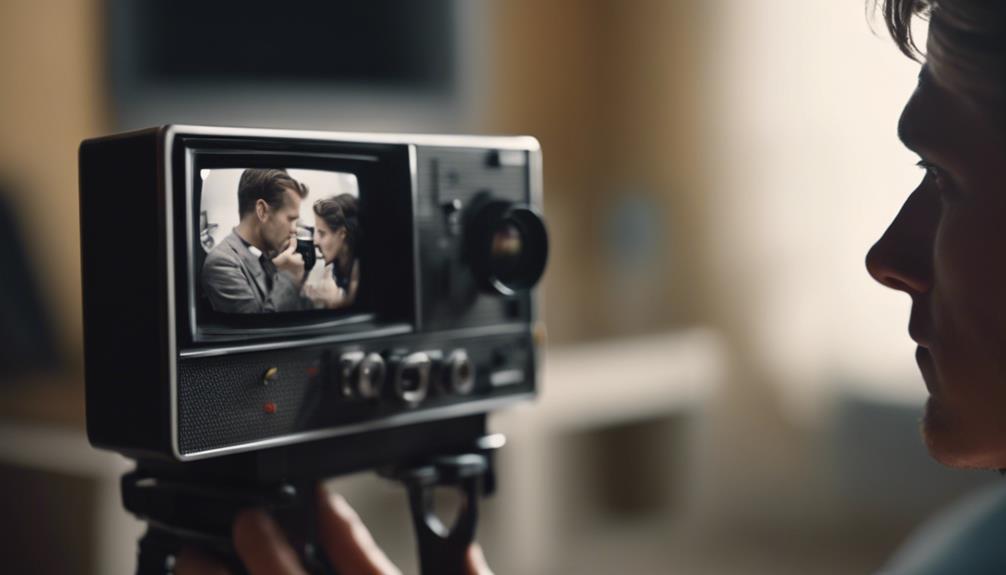
Before proceeding, have you confirmed that your spy camera is compatible with your TV? It's vital to verify that the spy camera you plan to connect to your TV possesses the necessary features for a successful setup.
Spy cameras come in various types, including analog, digital, and IP cameras, each with distinct functionalities. Analog cameras require a compatible analog input on the TV, while digital cameras often use HDMI or USB connections. IP cameras necessitate network compatibility for streaming footage to the TV.
When considering TV technology limitations, it's important to note that older televisions may not support newer spy camera models due to compatibility issues. For example, if your TV lacks HDMI ports but your camera solely utilizes HDMI output, you might encounter compatibility challenges.
Additionally, some TVs may not have the capability to display high-resolution footage from advanced spy cameras, impacting the overall viewing experience. Therefore, understanding the spy camera features and your TV's technology limitations is paramount before attempting to connect them.
Gather Necessary Cables and Adapters
To successfully connect your spy camera to your TV, make sure you have the necessary cables and adapters ready for the setup process. When gathering cables, consider the type of connections your spy camera and TV support. Common cable types include HDMI, RCA, and USB. HDMI cables are ideal for high-definition video and audio transmission, while RCA cables are suitable for analog connections. USB cables are often used for power supply or data transfer between devices.
For adapter options, you may need HDMI to RCA adapters or USB to HDMI adapters depending on the compatibility of your devices. Confirm that the adapters you choose are compatible with both your spy camera and TV to avoid any connection issues.
Setting up connections between your spy camera and TV requires careful consideration of the cable types and adapter options to ensure a seamless integration. Be mindful of compatibility issues that may arise due to differing connection standards between devices.
Locate TV Input Ports
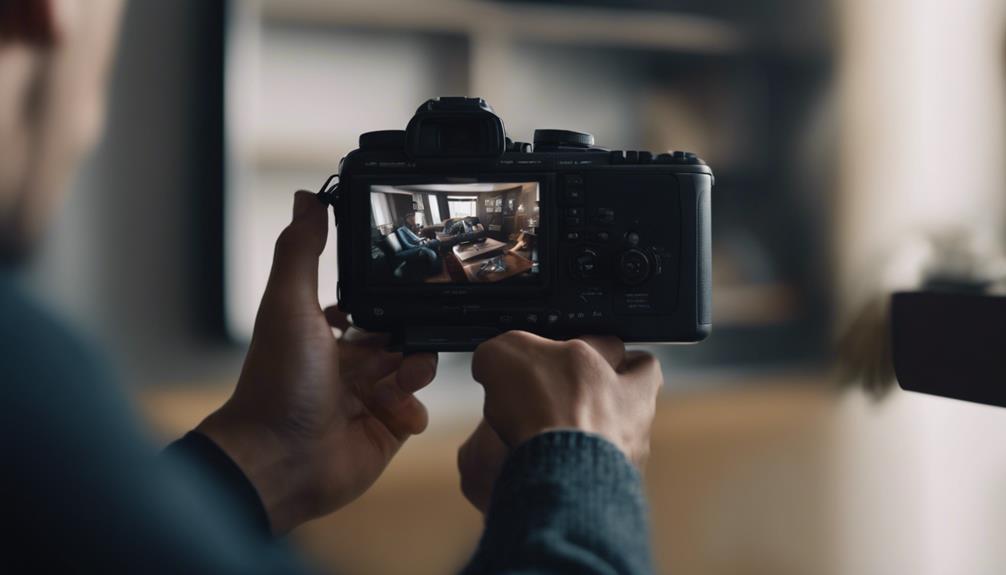
Check the back or side of your TV to locate the input ports for connecting external devices like your spy camera. Most modern TVs have multiple input options, including HDMI and RCA inputs. HDMI provides high-definition video and audio in a single cable, while RCA inputs are commonly used for analog signals.
To begin, identify the HDMI or RCA ports on your TV. These ports are typically labeled with abbreviations such as 'HDMI' or 'AV In.' Once you find the input ports, make sure that they're easily accessible for connecting your spy camera.
If you encounter any issues when connecting the spy camera, consider troubleshooting connections by checking if the cables are securely plugged into the correct ports. Additionally, be cautious and vigilant when inspecting your TV for any signs of hidden cameras that may have been installed without your knowledge.
Remember to switch the input source on your TV to the corresponding port where the spy camera is connected. This can usually be done using the TV remote control or the on-screen menu.
Power On the Spy Camera
Confirming the power button or switch on your spy camera is the initial step to power on the device and prepare it for connection to your TV. Before activating the camera, make sure that it's securely positioned and installed in the desired location to capture the necessary footage effectively.
Once the camera is in place, locate the power button, typically found on the side or back of the device, and press it to turn on the spy camera.
After activating the spy camera, you can proceed with setting up remote access for monitoring purposes. This step allows you to view the camera feed on your TV or other devices from a remote location. Follow the manufacturer's instructions to establish a secure connection for remote monitoring.
Connect Spy Camera to TV
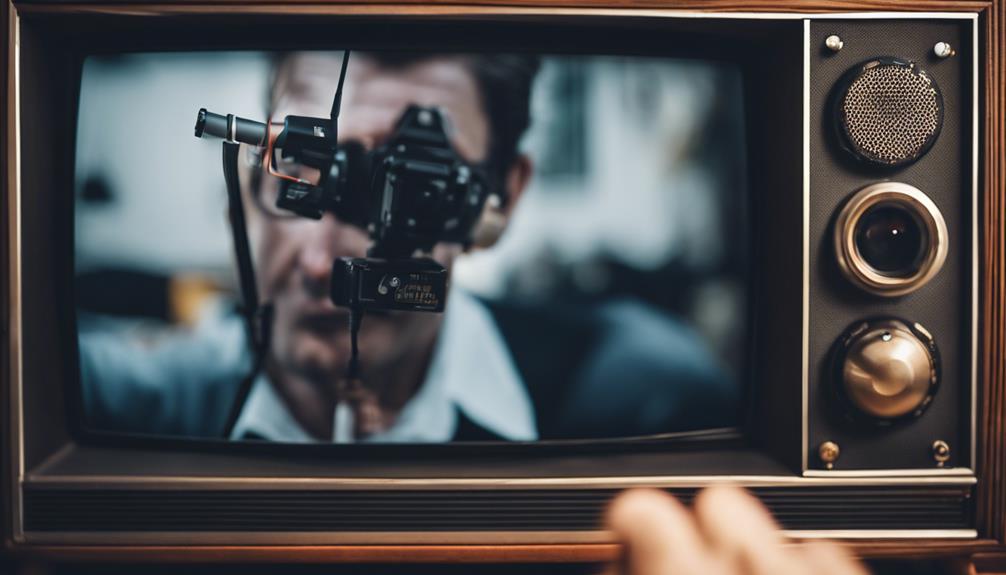
Begin by identifying the appropriate video output port on your TV to establish a connection with the spy camera. Most modern TVs have multiple input options including HDMI, RCA, VGA, or USB ports. Once you locate the suitable port, connect the spy camera using the corresponding cable.
For best camera placement, make sure it's positioned discreetly to avoid detection. Consider angles that provide the most effective view of the desired area while remaining inconspicuous.
After connecting the spy camera to your TV, access the TV settings to configure the input source. Navigate to the input selection menu on your TV and choose the port where the spy camera is connected. This step allows your TV to receive the video feed from the spy camera.
With the connection established, you can now explore remote viewing options if your spy camera supports it. Additionally, check if the camera offers recording options directly onto an external storage device for future playback. Adjust any necessary settings on both the camera and TV to ensure smooth operation.
Adjust TV Input Source
To guarantee seamless integration between your spy camera and TV, the next step involves setting the correct input source on your TV. Begin by turning on your TV and using the remote to access the TV settings. Look for the 'Input Source' or 'Input Select' option on the menu. Using the arrow keys on your remote, navigate to the input source that corresponds to the port where you connected the spy camera. This is usually labeled as 'HDMI,' 'AV,' or 'Video In.'
Ensure that the cable connections between the spy camera and the TV are secure. Once you have selected the correct input source, you should see the live feed from the spy camera on your TV screen. If you encounter any issues with signal reception or audio output, double-check the connections and make sure the camera is powered on.
Adjust the volume on your TV to hear the audio output from the spy camera if needed. You have now successfully adjusted the TV input source to view the footage from your spy camera.
Configure Camera Settings
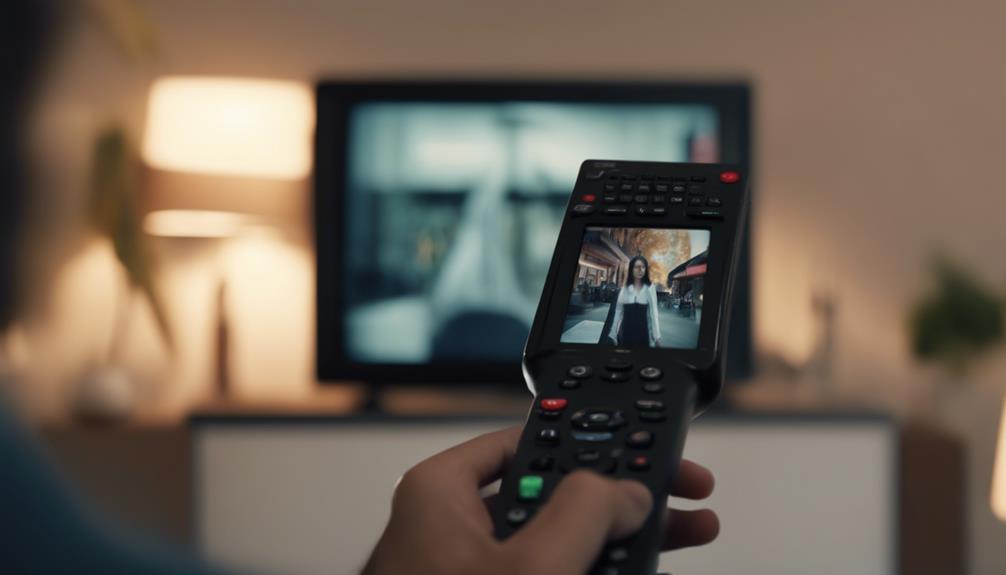
You may need to access the camera settings to optimize the performance and functionality of your spy camera. To begin, locate the settings menu on your camera.
Within the camera settings customization options, you can adjust parameters like resolution, frame rate, motion detection sensitivity, and recording duration. These adjustments can enhance the quality of your surveillance setup.
If you encounter issues with your spy camera, troubleshooting solutions can often be found in the settings menu. Look for options to reset the camera, update firmware, or adjust network settings if you're experiencing connectivity problems.
For remote viewing options, explore settings related to Wi-Fi connectivity and mobile app integration. By configuring these settings correctly, you can access live feeds from your spy camera on your smartphone or computer, enabling you to monitor your space from anywhere.
Remember to save any changes you make in the camera settings to make sure they take effect. Taking the time to customize these settings will help you maximize the functionality and efficiency of your spy camera.
View Spy Camera Footage
Access the live footage captured by your spy camera by connecting it to your TV using the appropriate input method. To view the spy camera footage on your TV screen, make sure that the camera is powered on and transmitting. Use the remote control to switch your TV to the correct input channel where the spy camera is connected. Once the camera feed is displayed on the screen, you can monitor security or review footage in real-time.
It's vital to have a clear understanding of how to navigate the TV's input settings to access the spy camera feed efficiently. Adjust the TV's display settings, such as brightness and contrast, to optimize the viewing quality of the footage.
If you encounter any issues with the display, troubleshoot the connections or camera settings to guarantee a seamless viewing experience.
Troubleshooting Tips
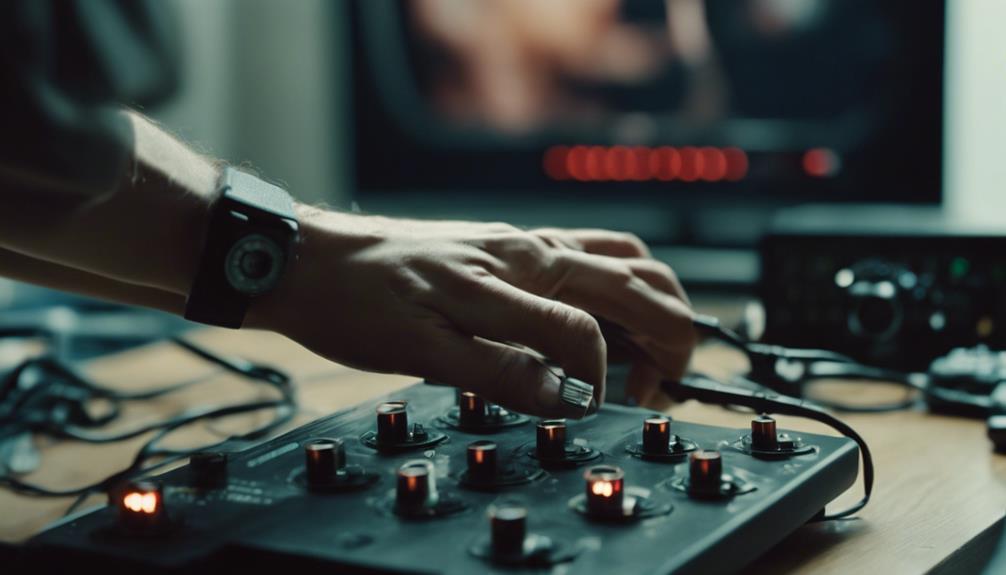
When facing connectivity issues between your spy camera and TV, start by checking the cables for proper insertion and secure connections. Signal interference can often cause problems with the video quality or audio playback. To troubleshoot, make certain that the cables aren't damaged and are plugged into the correct ports. If you're experiencing connection issues, try using different cables or ports to see if the problem resolves.
Additionally, make sure that the spy camera is powered on and functioning correctly. Sometimes, a simple reboot of both the camera and the TV can solve minor technical glitches. If you're still encountering problems, consider the possibility of signal interference from other electronic devices near the camera or TV. Move these devices away to improve the signal quality.
If the issue persists, consult the user manual for both the spy camera and the TV to verify that they're compatible and that all settings are configured correctly. If all else fails, contacting customer support for further assistance may be necessary.
Conclusion
To sum up, connecting a spy camera to your TV is a straightforward process that involves ensuring compatibility, gathering necessary cables, locating input ports, powering on the camera, and adjusting the TV settings.
By following these steps and troubleshooting any issues that may arise, you can easily view the footage captured by your spy camera on your TV screen.
Enjoy the convenience and security that this setup provides.
